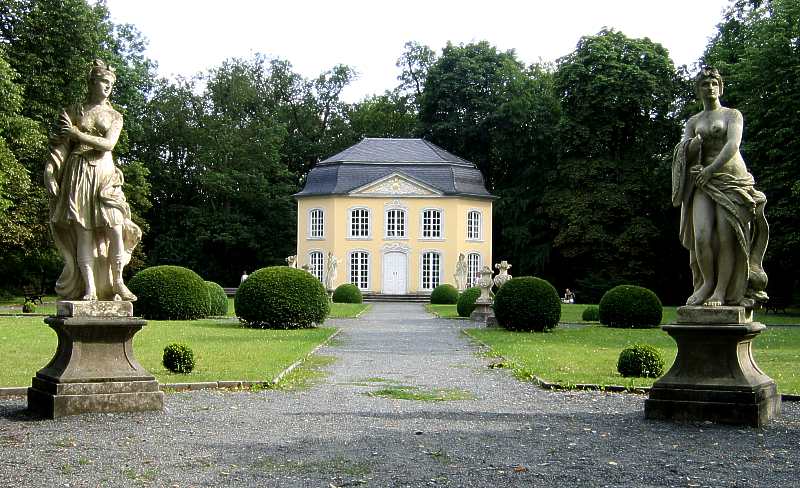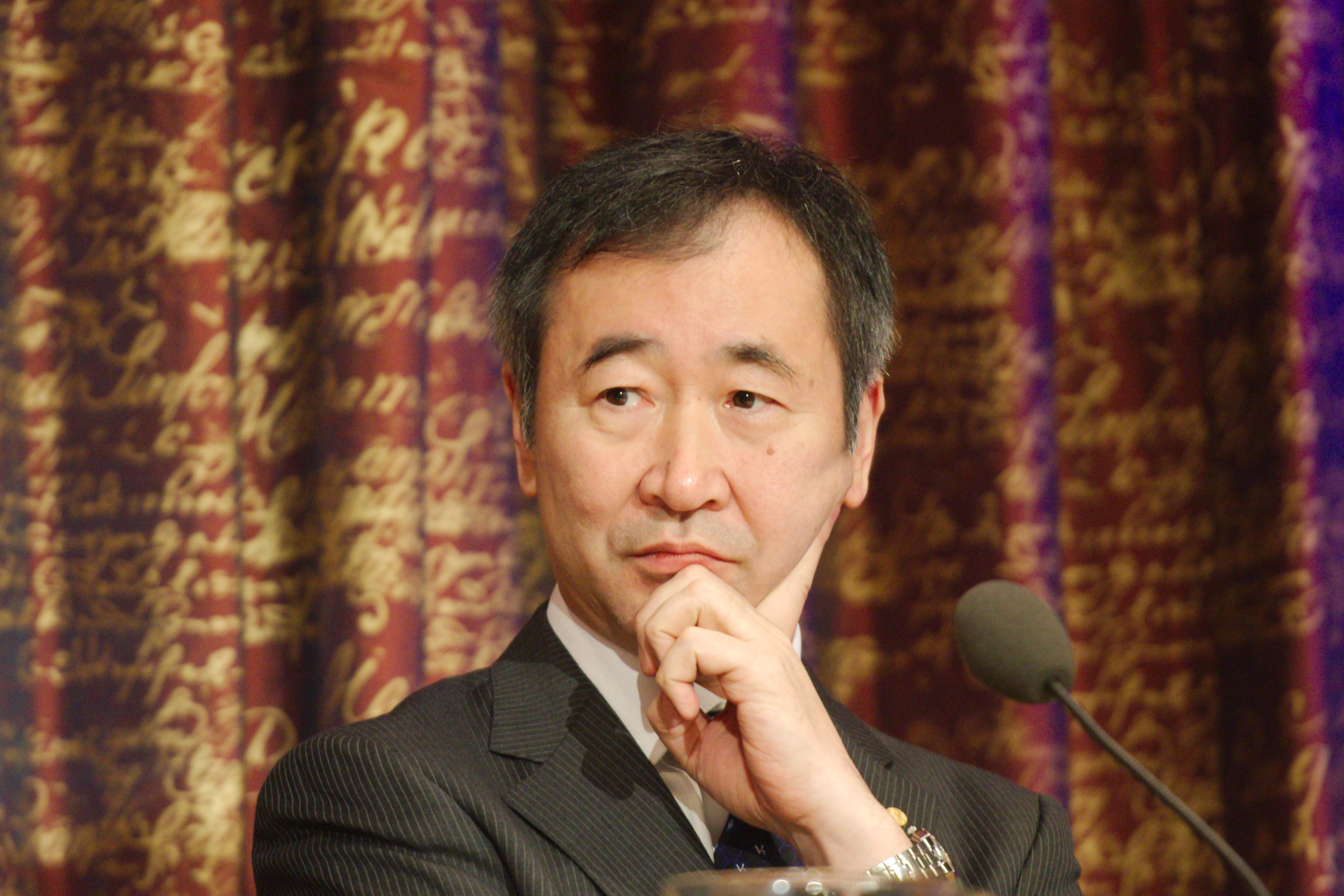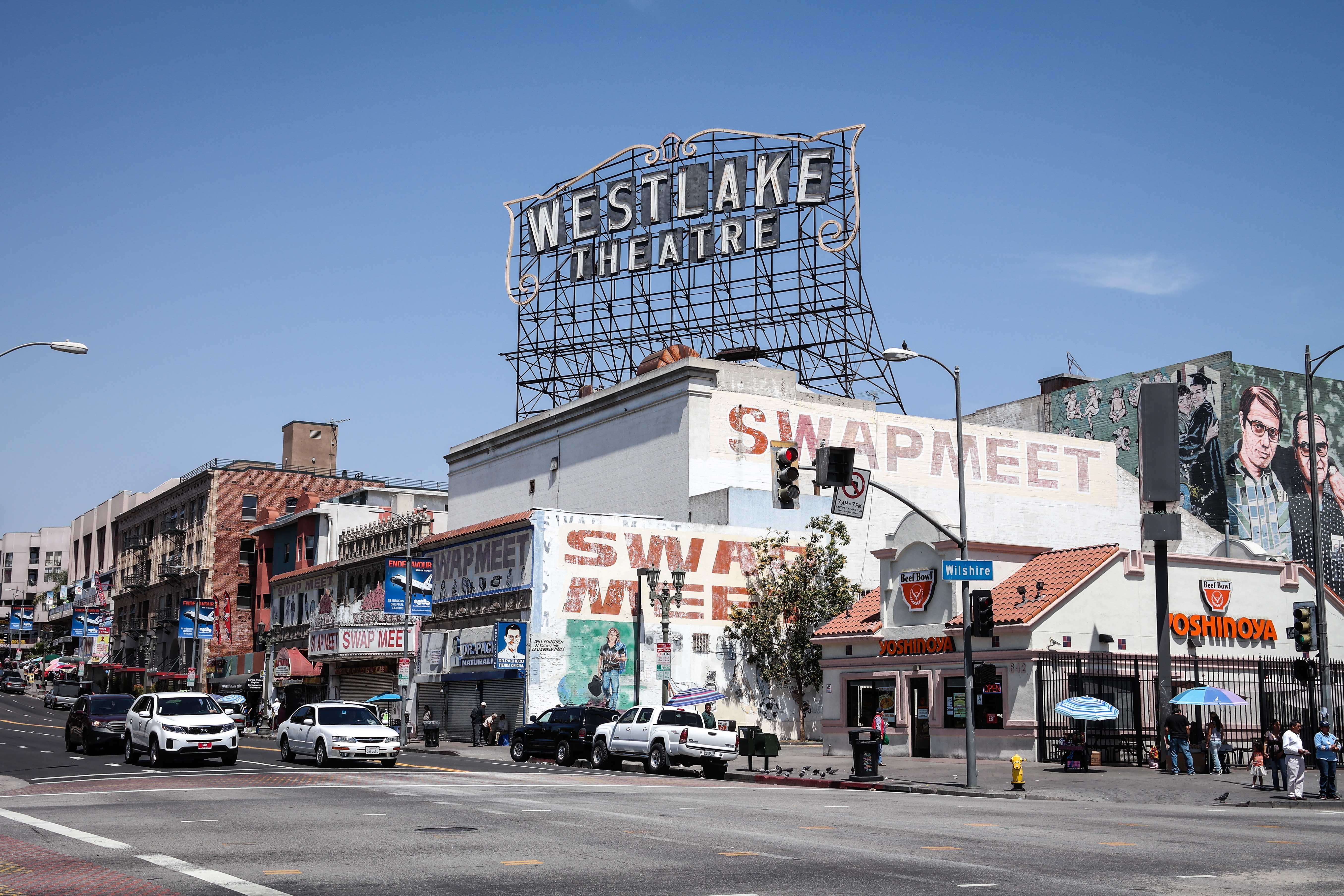|
Higher University Of San Andrés
Higher University of San Andrés (Universidad Mayor de San Andrés or UMSA or Major University of San Andrés) is the leading public university in Bolivia, established since 1830 in the city of La Paz. UMSA is the second-oldest university in Bolivia, after the University of San Francisco Xavier de Chuquisaca (1624). It is one of the most prestigious higher academic centers in the country. As of 2013, UMSA had around 80,434 registered students, making it the university with the largest student body in Bolivia. Several presidents of Bolivia have studied at the university. In 2017, the QS Latin American University Rankings placed UMSA as the best Bolivian university and in the position 91 of the Latin American Universities. History The university was founded by Andrés de Santa Cruz by Supreme Decree on 25 October 1830. Owing to its being situated in the nation's seat of government, La Paz, the Higher University of San Andrés has since its founding influenced the social life and ... [...More Info...] [...Related Items...] OR: [Wikipedia] [Google] [Baidu] |
La Paz
La Paz (), officially known as Nuestra Señora de La Paz (Spanish pronunciation: ), is the seat of government of the Plurinational State of Bolivia. With an estimated 816,044 residents as of 2020, La Paz is the third-most populous city in Bolivia. Its metropolitan area, which is formed by La Paz, El Alto, Achocalla, Viacha, and Mecapaca makes up the second most populous urban area in Bolivia, with a population of 2.0 million, after Santa Cruz de la Sierra with a population of 2.3 million. It is also the capital of the La Paz Department. The city, in west-central Bolivia southeast of Lake Titicaca, is set in a canyon created by the Choqueyapu River. It is in a bowl-like depression, part of the Amazon basin, surrounded by the high mountains of the Altiplano. Overlooking the city is the towering, triple-peaked Illimani. Its peaks are always snow-covered and can be seen from many parts of the city. At an elevation of roughly above sea level, La Paz is the highes ... [...More Info...] [...Related Items...] OR: [Wikipedia] [Google] [Baidu] |
Pavilion
In architecture, ''pavilion'' has several meanings: * It may be a subsidiary building that is either positioned separately or as an attachment to a main building. Often it is associated with pleasure. In palaces and traditional mansions of Asia, there may be pavilions that are either freestanding or connected by covered walkways, as in the Forbidden City ( Chinese pavilions), Topkapi Palace in Istanbul, and in Mughal buildings like the Red Fort. * As part of a large palace, pavilions may be symmetrically placed building ''blocks'' that flank (appear to join) a main building block or the outer ends of wings extending from both sides of a central building block, the '' corps de logis''. Such configurations provide an emphatic visual termination to the composition of a large building, akin to bookends. The word is from French (Old French ) and it meant a small palace, from Latin (accusative of ). In Late Latin and Old French, it meant both ‘butterfly’ and ‘tent’, becaus ... [...More Info...] [...Related Items...] OR: [Wikipedia] [Google] [Baidu] |
Schools In La Paz
A school is an educational institution designed to provide learning space Learning space or learning setting refers to a physical setting for a learning environment, a place in which teaching and learning occur. The term is commonly used as a more definitive alternative to " classroom," but it may also refer to ...s and learning environments for the teaching of students under the direction of teachers. Most countries have systems of formal education, which is sometimes compulsory education, compulsory. In these systems, students progress through a series of schools. The names for these schools vary by country (discussed in the ''School#Regional terms, Regional terms'' section below) but generally include primary school for young children and secondary school for teenagers who have completed primary education. An institution where higher education is taught is commonly called a university college or university. In addition to these core schools, students in a given ... [...More Info...] [...Related Items...] OR: [Wikipedia] [Google] [Baidu] |
Educational Institutions Established In 1830
Education is a purposeful activity directed at achieving certain aims, such as transmitting knowledge or fostering skills and character traits. These aims may include the development of understanding, rationality, kindness, and honesty. Various researchers emphasize the role of critical thinking in order to distinguish education from indoctrination. Some theorists require that education results in an improvement of the student while others prefer a value-neutral definition of the term. In a slightly different sense, education may also refer, not to the process, but to the product of this process: the mental states and dispositions possessed by educated people. Education originated as the transmission of cultural heritage from one generation to the next. Today, educational goals increasingly encompass new ideas such as the liberation of learners, skills needed for modern society, empathy, and complex vocational skills. Types of education are commonly divided into formal, ... [...More Info...] [...Related Items...] OR: [Wikipedia] [Google] [Baidu] |
Universities In Bolivia
A university () is an institution of higher (or tertiary) education and research which awards academic degrees in several academic disciplines. ''University'' is derived from the Latin phrase ''universitas magistrorum et scholarium'', which roughly means "community of teachers and scholars". Universities typically offer both undergraduate and postgraduate programs. The first universities in Europe were established by Catholic Church monks. The University of Bologna (), Italy, which was founded in 1088, is the first university in the sense of: *being a high degree-awarding institute. *using the word ''universitas'' (which was coined at its foundation). *having independence from the ecclesiastic schools and issuing secular as well as non-secular degrees (with teaching conducted by both clergy and non-clergy): grammar, rhetoric, logic, theology, canon law, notarial law.Hunt Janin: "The university in medieval life, 1179–1499", McFarland, 2008, , p. 55f.de Ridder-Symoens, Hilde''A ... [...More Info...] [...Related Items...] OR: [Wikipedia] [Google] [Baidu] |
Takaaki Kajita
is a Japanese physicist, known for neutrino experiments at the Kamioka Observatory – Kamiokande and its successor, Super-Kamiokande. In 2015, he was awarded the Nobel Prize in Physics jointly with Canadian physicist Arthur B. McDonald. On 1 October 2020, he became the president of the Science Council of Japan. Early life and education Kajita was born in 1959 in Higashimatsuyama, Saitama, Japan. He liked studying thought rather than memorizing, especially with interest in physics, biology, world history, Japanese history, and earth science in high school. He studied physics at Saitama University and graduated in 1981. He received his doctorate in 1986 at the University of Tokyo. At the University of Tokyo, he joined Masatoshi Koshiba's research group because neutrinos "seemed like they might be interesting." Career and research Since 1988, Kajita has been at the Institute for Cosmic Radiation Research, University of Tokyo, where he became an assistant professor in 1992 a ... [...More Info...] [...Related Items...] OR: [Wikipedia] [Google] [Baidu] |
Eduardo Bayro
Eduardo is the Spanish and Portuguese form of the male given name Edward. Another version is Duarte. It may refer to: Association football * Eduardo Bonvallet, Chilean football player and sports commentator * Eduardo Carvalho, Portuguese footballer * Eduardo "Edu" Coimbra, Brazilian footballer * Eduardo Costa, Brazilian footballer * Eduardo da Conceição Maciel, Brazilian footballer * Eduardo da Silva, Brazilian-born Croatian footballer * Eduardo Adelino da Silva, Brazilian footballer * Eduardo Ribeiro dos Santos, Brazilian footballer * Eduardo Gómez (footballer), Chilean footballer * Eduardo Gonçalves de Oliveira, Brazilian footballer * Eduardo Jesus, Brazilian footballer * Eduardo Martini, Brazilian footballer * Eduardo Ferreira Abdo Pacheco, Brazilian footballer Music * Eduardo (rapper), Carlos Eduardo Taddeo, Brazilian rapper * Eduardo De Crescenzo, Italian singer, songwriter and multi-instrumentalist Politicians * Eduardo Año, Filipino politician and retired army gener ... [...More Info...] [...Related Items...] OR: [Wikipedia] [Google] [Baidu] |
Jaime Escalante
Jaime Alfonso Escalante Gutiérrez (December 31, 1930 – March 30, 2010) was a Bolivian-American educator known for teaching students calculus from 1974 to 1991 at Garfield High School in East Los Angeles. Escalante was the subject of the 1988 film ''Stand and Deliver'', in which he is portrayed by Edward James Olmos. In 1993, the asteroid 5095 Escalante was named after him. Early life Escalante was born in 1930 in La Paz, Bolivia. Both of his parents were teachers. Escalante was proud of his Aymara heritage. Early career Escalante taught mathematics and physics for 12 years in Bolivia before he immigrated to the United States. He worked various jobs while teaching himself English and earning another college degree before eventually returning to the classroom as an educator. In 1974, he began to teach at Garfield High School. Escalante eventually changed his mind about returning to work when he found 12 students willing to take an algebra class.Mathews Shortly after ... [...More Info...] [...Related Items...] OR: [Wikipedia] [Google] [Baidu] |
Gregorio Baro
Gregorio Baró (June 19, 1928 - May 28, 2012) was an Argentine scientist. He was born in Santiago Temple, Córdoba and died in Buenos Aires. Biography The son of Spanish immigrants from the Province of León, more precisely from Cabreros del Río, Baró married the writer María Dhialma Tiberti. He completed his Associate of Science in Chemistry degree at the Otto Krause Technical School in Buenos Aires, in 1945. Afterward, he pursued his studies at Universidad de Buenos Aires from which he obtained a Bachelor of Science, followed by a PhD in Chemistry in 1961 at the Instituut voor Kernphysisch Onderzoek, in Amsterdam. In 1968, he conducted research on the production of radioisotopes in Bombay, India, organized by the International Atomic Energy Agency. Baró was additionally a professor at several universities, such as Universidad de Buenos Aires, Universidad Nacional de La Plata, Universidad Nacional de Cuyo, Universidad Nacional de Rosario, and Universidad Nacional de ... [...More Info...] [...Related Items...] OR: [Wikipedia] [Google] [Baidu] |
Eduardo Del Castillo
Carlos Eduardo del Castillo del Carpio (born 27 December 1988) is a Bolivian lawyer and politician currently serving as the Minister of Government of Bolivia since 9 November 2020. Biography Eduardo del Castillo was born on 27 December 1988 in Santa Cruz de la Sierra. He studied law at the Gabriel René Moreno Autonomous University graduating as a lawyer. He completed postgraduate studies, obtaining a master's degree in Tax and Financial Law from the Higher School of Law and has a diploma in Higher Education and Interculturality from the Higher University of San Andrés. He also holds a diploma in Economic, Social, and Cultural Rights from the University of Buenos Aires in Argentina. A member of the Movement for Socialism (MAS) since 2005, del Castillo began his work in the Bolivian Chamber of Senators as a technical secretary and advisor to the Commission for Plural Justice. He later served as senior officer of the Senate. He worked in the Ministry of Government as a legal a ... [...More Info...] [...Related Items...] OR: [Wikipedia] [Google] [Baidu] |
Ana Teresa Morales
Ana Teresa Morales Olivera (La Paz, 26 October 1959) is a Bolivian economist, professor, and politician. She was the Minister of Productive Development and Plural Economy of Bolivia from 23 January 2011, to 23 January 2015, during the second government of President Evo Morales Ayma. Biography Ana Teresa Morales was born on 26 October 1959, in the city of La Paz. She is the daughter of the renowned Potosí lawyer Manuel Morales Dávila. Teresa studied economics at the Higher University of San Andrés, graduating as an economist by profession in 1983. She has a doctorate in developmental sciences from CIDES – UMSA, and a master's degree in human development. During her career, she worked as a professor and was a consultant to various institutions on issues of productive promotion, urban poverty, and rural-urban micro-enterprises. She has also been coordinator of the Legal Unit for Constitutional Development in the Plurinational Legislative Assembly, advisor to the bench of ... [...More Info...] [...Related Items...] OR: [Wikipedia] [Google] [Baidu] |
Astronomical Observatory Of Patacamaya
Patacamaya or Patak Amaya (Aymara) is a city in Bolivia, situated in the La Paz Department. It is the seat of the Patacamaya Municipality, the fifth municipal section of the Aroma Province. Patacamaya lies in the Altiplano, approximately 100 km southeast of La Paz. It contains the intersection between 'Carretera 1' which goes from La Paz to Oruro, as well as Cochabamba, and the 'Carretera Arica-La Paz'. The 'Tambo Quemado' highway is one of the most important international roads that travels through Bolivia. Name The name of the city originated from a war that occurred in the 1920s between Aymaras and Quechuas. The word ''Patakamaya'' is a conglomeration of two words; ''pataka'' meaning "100" and ''amaya'' meaning "dead", referring to the casualties of the war. Observatory Situated 3789 meters above sea level, Patacamaya is a prime location for astronomical observation. Its lightly populated area keeps light pollution at a minimum, making it an ideal place for an obser ... [...More Info...] [...Related Items...] OR: [Wikipedia] [Google] [Baidu] |





